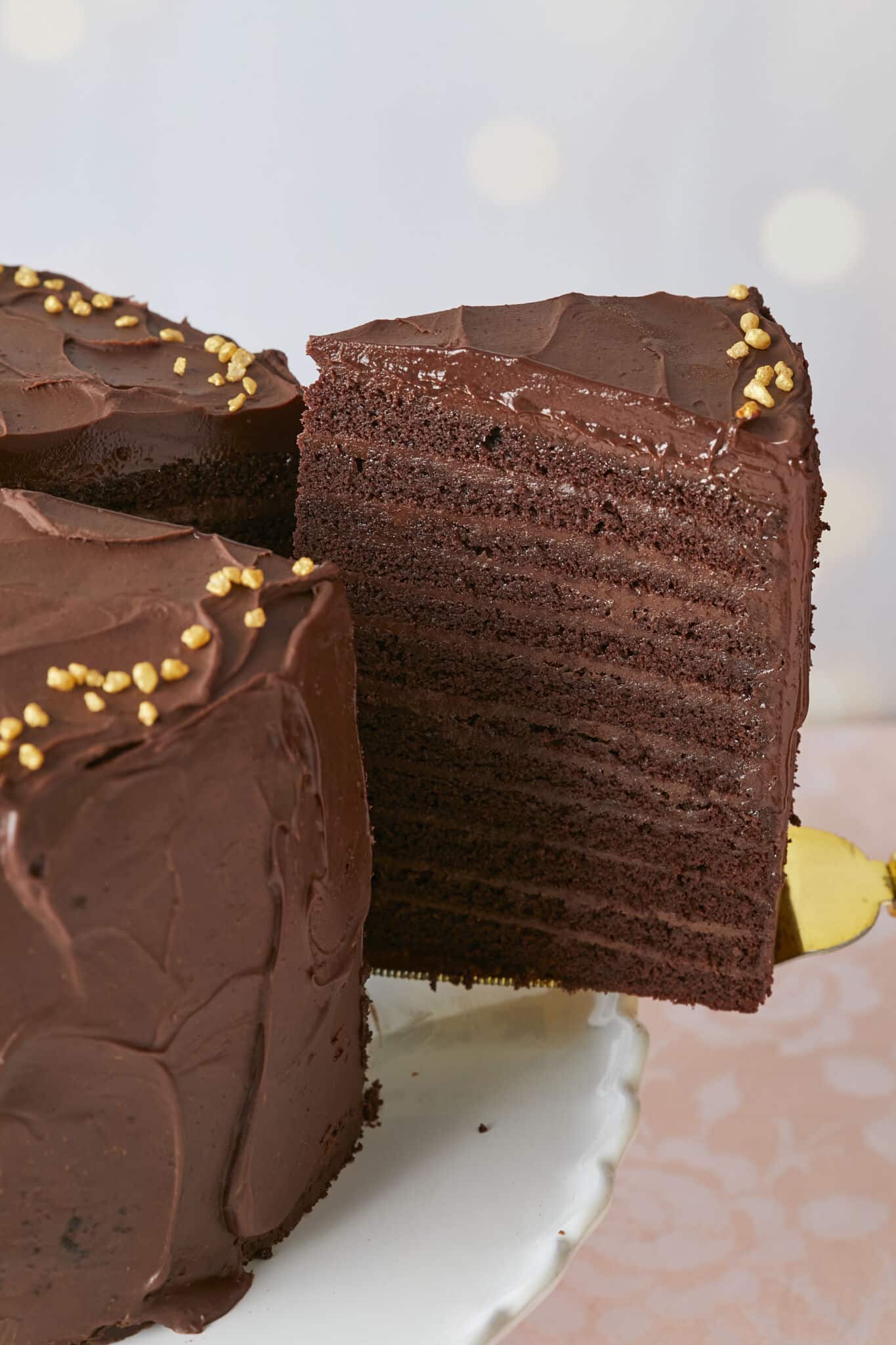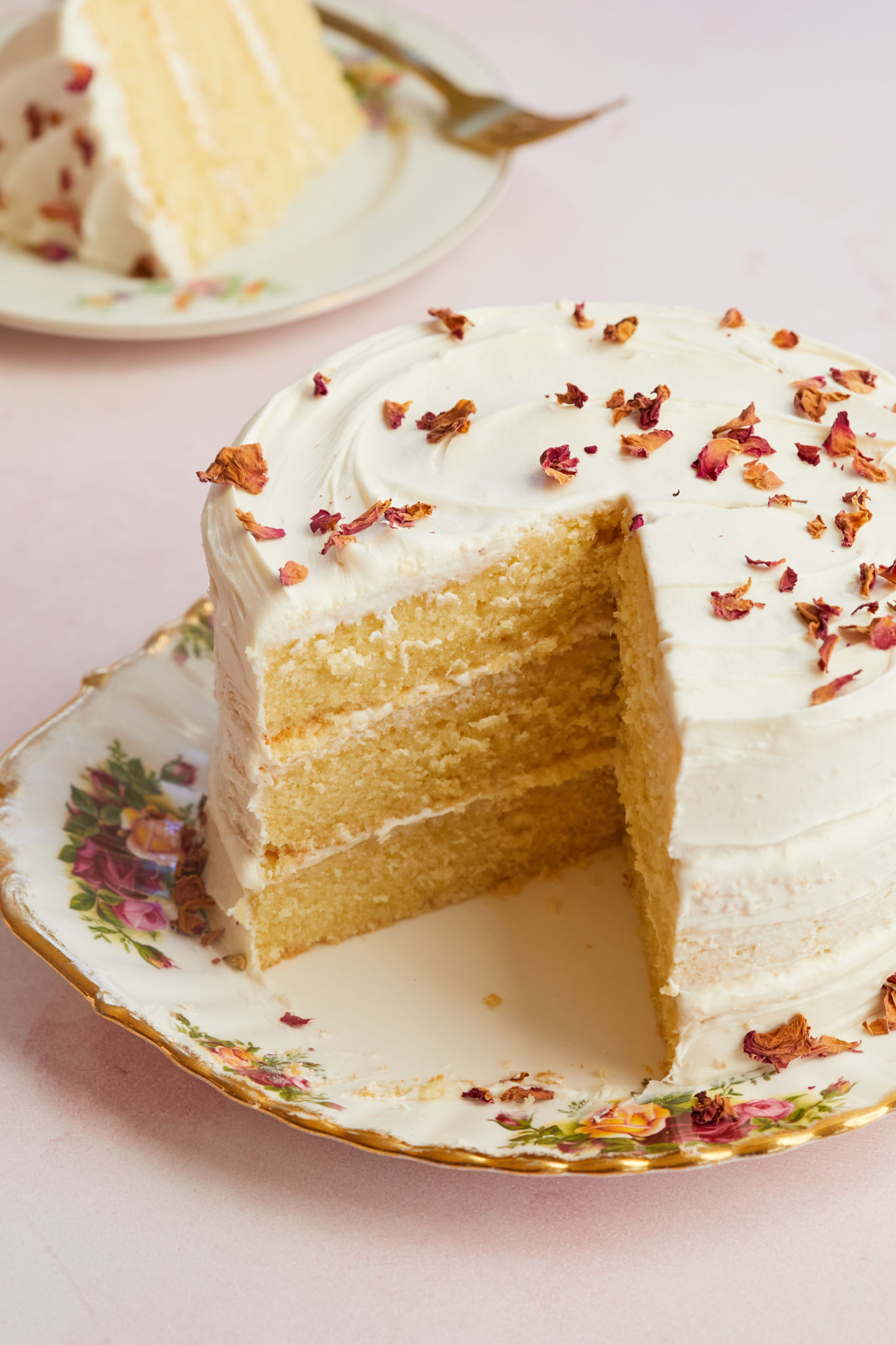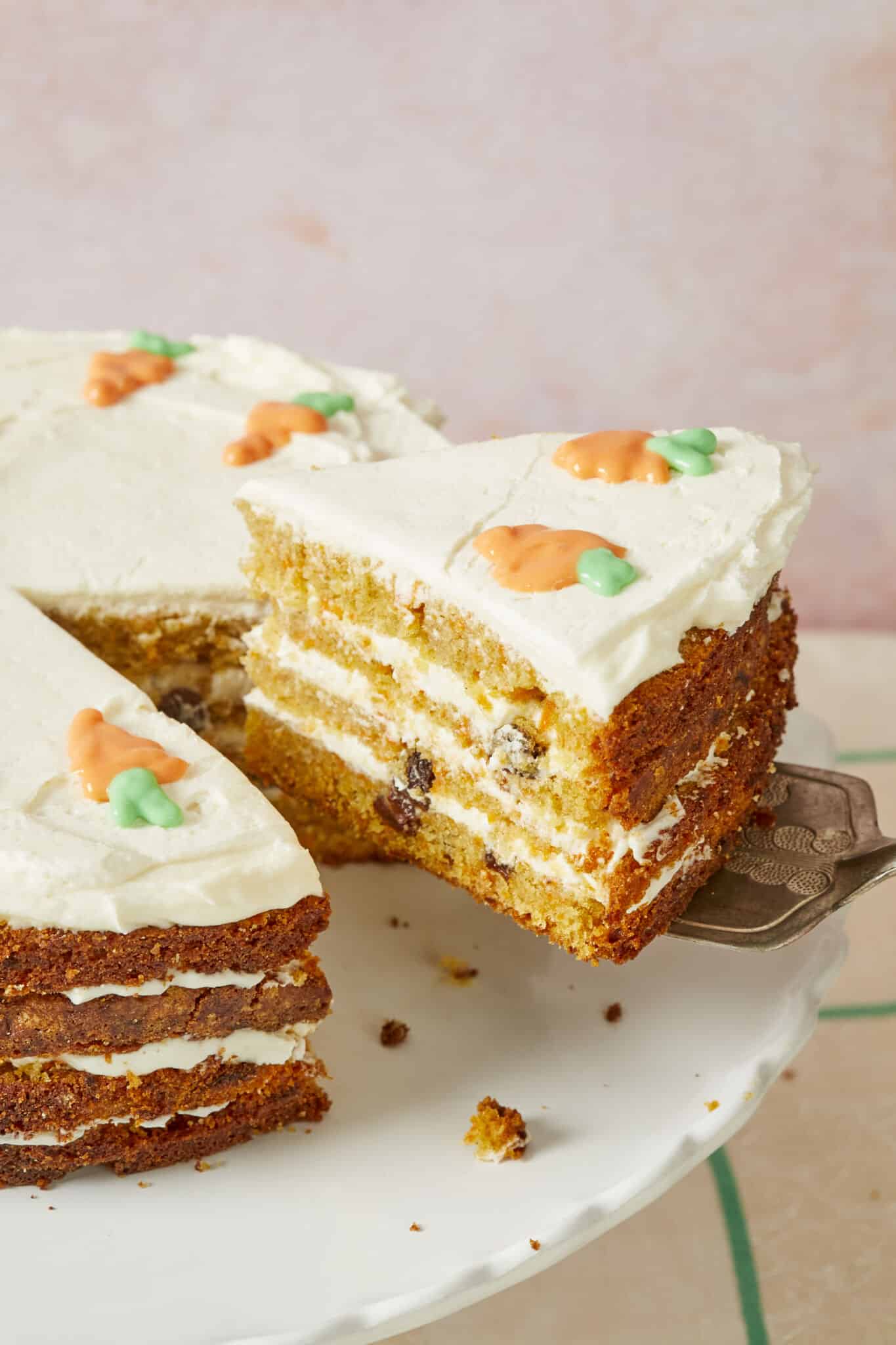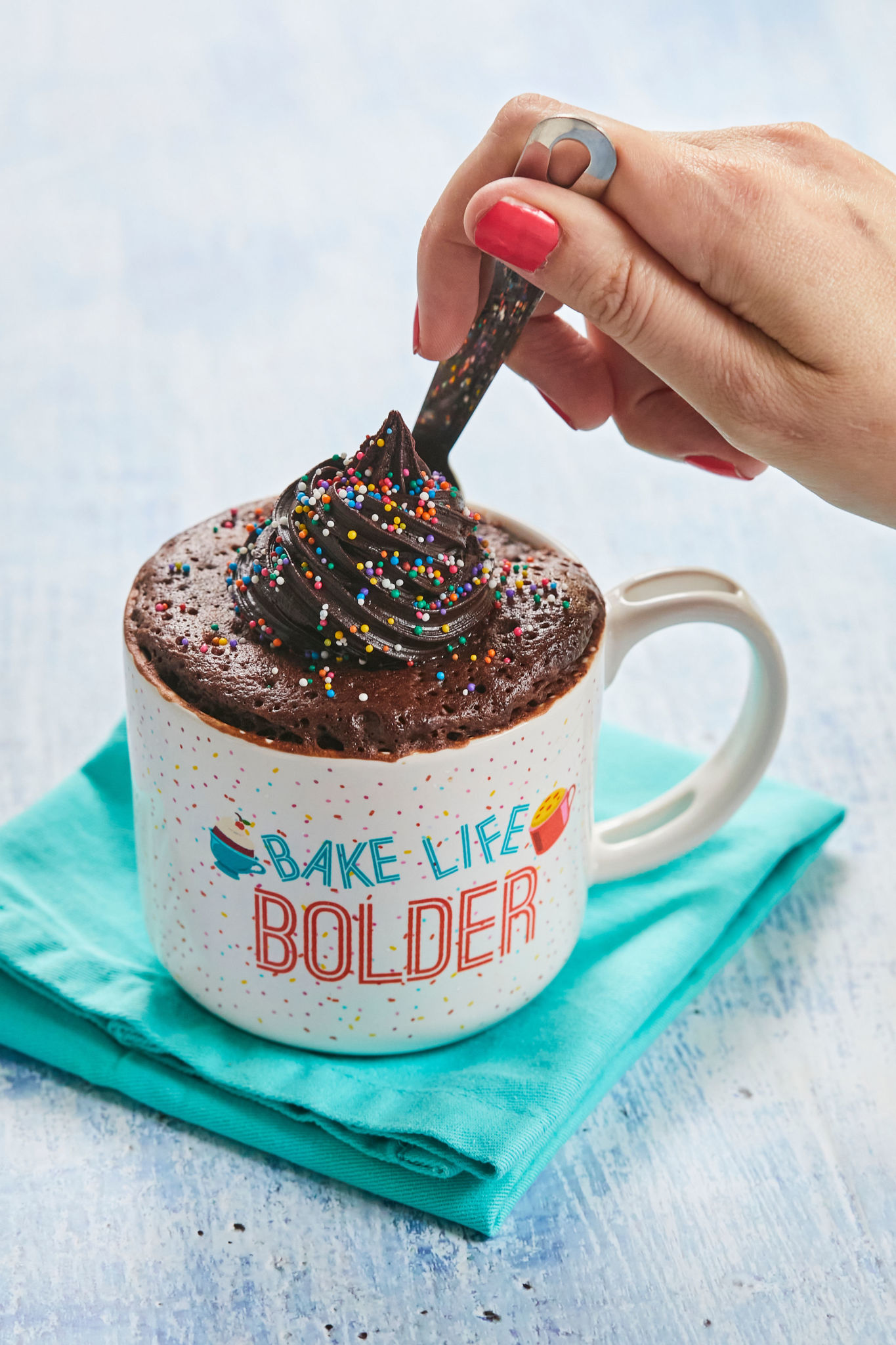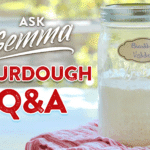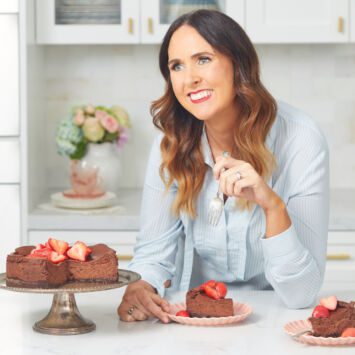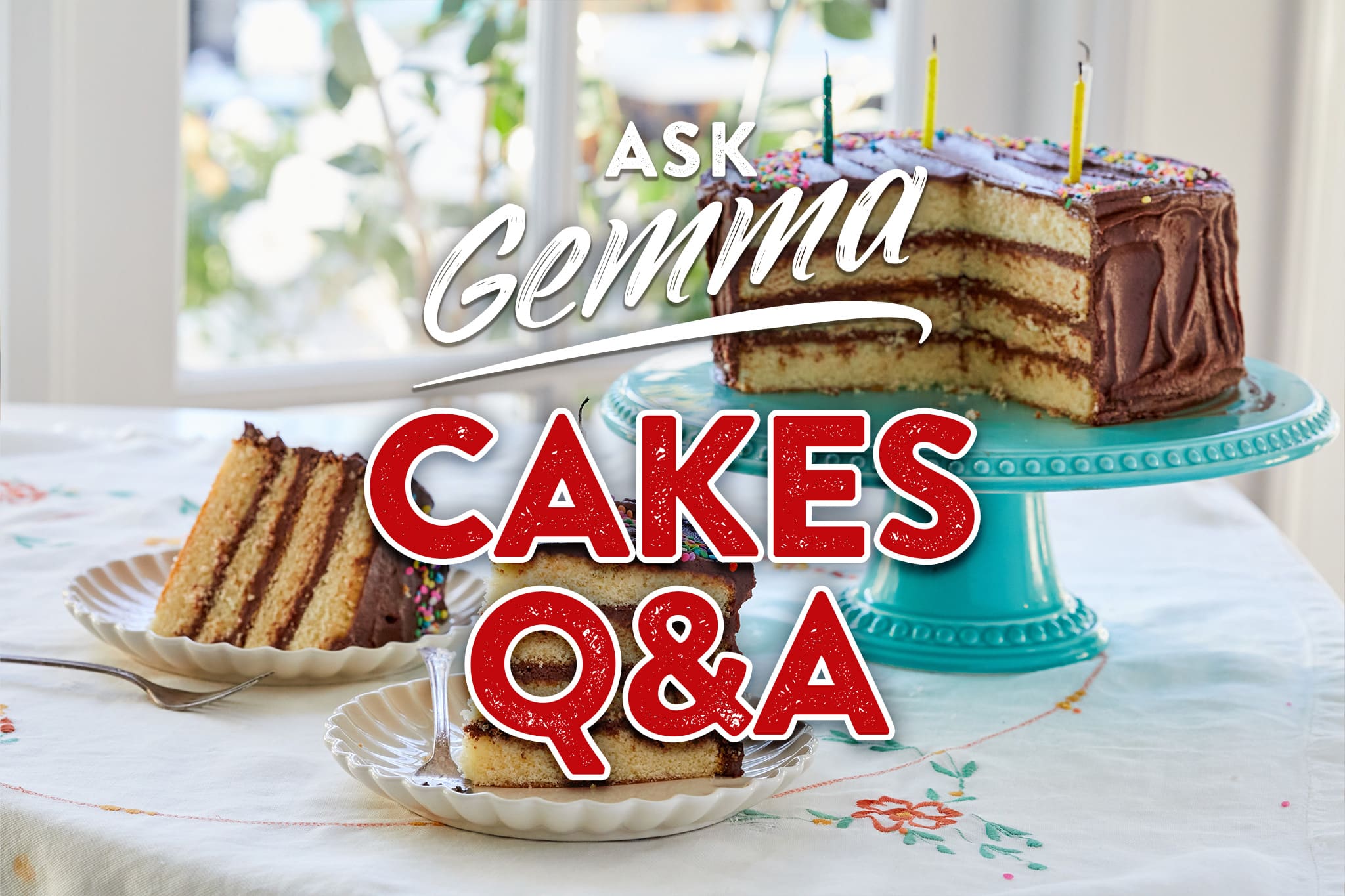
This post may contain affiliate links. Please see my full disclosure for details.
Hi Bold Bakers!
WHY YOU’LL LOVE THIS Q&A: After two decades immersed in the world of confectionery delights and honing my skills as a pastry chef, alongside a deep-seated love for crafting delectable cakes, I’ve gathered a wealth of knowledge of cake-baking questions. With a global community of cake enthusiasts who share our passion, we have compiled this Cake Q&A which is enriched with extensive insights and expertise in the realm of cake baking.
With so much information gathered over the years, we have created the internet’s most thorough documents that will help you make ice cream, cookies, cheesecakes, pastries, scones, sourdough, and more! In this comprehensive guide, we have your cake-baking questions answered!
From simple yet sublime creations to intricately decorated masterpieces, we’ve meticulously addressed countless questions from our dedicated followers. Together, we’ve meticulously curated the ultimate Cakes Q&A, offering unparalleled guidance and solutions to the most common (and uncommon) queries, making it the definitive resource for cake enthusiasts worldwide.
Table of Contents
- Cake Baking Questions: Dry Ingredients in Cakes
- Cake Baking Questions: Wet Ingredients in Cakes
- Cake Baking Questions: Fat in Cakes
- Cake Baking Questions: Tools for Making Cakes
- Most Frequently Asked Questions about Cake Baking
- Troubleshooting for Cake Baking
- Most Popular Cake Recipes
Cake Baking Questions: Dry Ingredients in Cakes
Q: Do you have to use cake flour or can you use all-purpose flour?
A: No, you don’t have to, but it does give you a finer crumb with fewer air pockets. If you don’t have cake flour, click here to see my quick and easy cake flour recipe that just requires all-purpose flour and cornstarch.
Q: Can you use self-raising flour instead of all-purpose flour in cakes?
A: We don’t recommend it. Self-raising flour contains raising agents, as do most cake recipes. This will result in too much leavening which can cause your cake to collapse. Simply leaving out the leavening in the recipe if using self-raising flour may also be inaccurate and will likely lead to a dense or sunken cake. Finally, in the US, self-raising flour has added salt which can affect the flavor of your cake.
If you only have self-raising flour, look for a recipe that has been specifically developed to use this flour, like our Skillet Gingerbread Cake or Victoria Sponge Cake.
Q: Can I use whole wheat flour in cakes?
A: Yes, you can use whole wheat flour in cakes.
- We recommend that you use white whole wheat flour, which will be less textured than stone ground or red whole wheat flour. Also, we do not recommend replacing more than 50% of the cake flour or all-purpose flour with whole wheat flour, otherwise, your cake will be very dense. Regardless of how much whole wheat flour you use, it will give the cake a more rustic, less refined texture, which might be desirable, depending on the cake.
- Cake recipes that include tenderizing buttermilk, sour cream or yogurt will give you the best results if adding whole wheat flour to your cake.
Q: Why do most cakes call for salt?
A: In small amounts, salt brings out the flavors of your ingredients, especially in chocolate and fruit. We always use table salt here.
Q: Can you use brown sugar instead of white sugar in cakes?
A: The short answer is yes! But you will have some different (possibly desirable) results.
- Compared to white sugar, brown sugar contains molasses, and it is denser, more hygroscopic and acidic. This means that it will not trap as much air during the creaming process and will pull in and hold more moisture during the baking process. This will result in a denser, moister cake with caramel color and flavor.
- The acid present in brown sugar reacts well with baking soda to create cakes with more lift. However, we don’t recommend adjusting the leavening if your recipe only contains baking powder unless you are prepared for some trial and error.
Enjoy your denser, more caramelly cake – or try a brown sugar substitution in a cake that is made with buttermilk or sour cream and therefore will likely already have baking soda in the recipe.
Luxurious 24-Layer Chocolate Cake
Cake Baking Questions: Wet Ingredients in Cakes
Q: Can you use skim milk instead of whole milk?
A: Yes, any kind of milk will work! Just know that skim milk is fat-free and has a higher water content when compared to whole milk, and this may affect the texture and flavor of the cake.
Q: How can you replace egg whites in cakes?
A: You can use aquafaba instead of egg whites in a 1:1 ratio (2 tbsp aquafaba per 1 egg white).
Q: If I’m halving a recipe that uses an odd number of eggs, how should I use half an egg?
A: Beat an egg in a small bowl and use 2 tablespoons to equal half of an egg.
Q: What’s the best egg substitute for cakes?
A: Silken tofu and bananas from my Best Egg Substitutes Chart work very well.
Find out how different egg substitutes affect cake recipes by watching my video—Which Egg Substitute Made the Best Cake from Gemma’s Test Kitchen!
Q: What can I use instead of buttermilk?
A: The best substitute for store-bought buttermilk is my easy Homemade Buttermilk. You can also use yogurt or sour cream, but because these are thicker, you will need to dilute it with a bit of milk. For every 1 cup (8 fl oz/240 ml) of buttermilk, you will need ¾ cup (6 oz/170 g) yogurt or sour cream plus ¼ cup (2 fl oz/60 ml) of milk.
Cake Baking Questions: Fat in Cakes
Q: Can you use margarine instead of butter in this recipe?
A: Yes, but the flavor won’t be as rich. Our preference is real butter if possible.
Q: Can you use butter instead of oil in cakes?
A: Yes, you can replace oil with butter in cakes.
- But oil is 100% fat whereas butter contains a percentage of water that will evaporate during baking. Replacing oil with butter will result in a cake that is a bit firmer and drier than the same cake made with oil.
- However, butter adds a wonderful flavor, so we suggest a compromise on flavor and texture and only replace half of the oil with butter.
- Also note that when using butter to replace oil, it must be melted and cooled (but still liquid).
- Finally, use a European-style butter with higher fat content for a result that is most similar to oil.
Tools for Making Cakes
Q: How can I adjust the cooking time if I use a different-size cake pan?
A: If you’re using a larger pan than the recipe calls for, your cake will be shallower and may have a shorter baking time. Begin checking for doneness about ¾ of the way through the minimum suggested bake time.
If you’re using a smaller pan, your cake will be thicker and may have a longer baking time, so begin checking the cake at the maximum suggested bake time, and then check every 2-5 minutes after, depending on how wet the batter is.
Q: Do I have to use parchment paper when baking cakes?
A: Parchment paper is used in most cake recipes to prevent sticking, promote even cooking, and ease cleanup.
- Parchment paper helps release cakes more easily. Butter your cake pan first, then line it with parchment paper so it stays in place. After this, butter and flour the parchment if the recipe calls for this.
- If you don’t have parchment paper, a large, round coffee filter will also work.
- Check out my post and learn How to Line a Round Pan perfectly.
Lemon Cake With Lemon Buttercream Frosting
Most Frequently Asked Questions about Cake Baking
Q: Can you make a one-layer cake instead of a multi-layer cake?
A: Yes, you absolutely can!
- Cake pans should not be filled more than ⅔ full to give the cake room to rise. If you are using a recipe intended to be a multi layer cake, be sure to use a pan large enough to accommodate a single layer without being filled more than ⅔ of the way up (or reduce the recipe by half).
- Also note that a thicker cake batter will set more quickly along the edges, and may possibly over-bake before the center is done. This can be remedied by using a wider pan than the recipe recommends. For example, if a recipe calls for two 8-inch (20 cm) layers, you might have more even results baking this in a single 10-inch (25 ½ cm) layer versus a single 8-inch (20 cm) layer.
Q: If I want to make a regular cake into a sheet cake, do I need to double the recipe?
A: No, you won’t need to double the recipe but the baking times will be different. For a cake recipe intended for two 9-inch (23 cm) round pans, follow these guidelines:
- For a 9x13x2 inch (23 x 33 x 5 cm) pan, the whole batter should fit fine but just be sure that it does not come more than two-thirds of the way up. It will likely take a few minutes longer to bake than the stated baking time for two pans, but be sure to check frequently.
- For a 13×18 x1 inch (33 x 46 x 2 ½ cm) half-sheet pan, you may need slightly less batter, depending on the recipe. Be sure the batter comes no more than two-thirds of the way up the sides. Due to the shallowness of the batter, the cake will bake up much faster. Start checking for doneness about halfway through the recommended baking time.
Q: Can you reduce the sugar in cakes?
A: Sugar contributes both sweetness and moisture to cakes. Reducing sugar will make the cake drier so we suggest cutting back by no more than 25%. Just a note that when you do change the recipe as written it is likely you will get different results.
Q: Can you turn any cake recipe into cupcakes? If so, how long should you bake them?
A: Yes, any cake can be turned into cupcakes. Bake times can vary greatly, depending on the recipe. Begin checking for doneness at 5-10 minutes before the minimum recommended bake time.
- Can you half or double a cake recipe?
- Yes, you can double or half a recipe and it should work perfectly! To double the recipe, multiply each ingredient by 2, and to half the recipe, divide each ingredient by two.
- I live in a high-altitude climate and my cake was dense. How can I correct it?
- Click here to see my Guide To High-Altitude Baking.
- What is a crumb coat and do I need one?
- A crumb coat is the first, thin layer of frosting that seals all the cake crumbs to keep them from being visible in the final layer of frosting. It’s not necessary but it will give your cake a more professional look.
- How do I create a crumb coat?
- To make a crumb coat, fill and stack your cake layers, then apply a very thin layer of frosting all over the top and sides of the cake. Refrigerate the cake for 30 minutes, until the frosting is firm. Then cover the cake with a generous,decorative layer of frosting.
- How do I know my cake is perfectly baked? How to check if a cake is done?
- A cake is perfectly baked when there is no wetness on top and a toothpick inserted in the center comes out clean. Other ways to tell (but not always true for every cake) is that it’s firm to touch in the center, springs back lightly when pressed and the edge pulls away from the pan a little bit.
- Can you make any cake in the microwave?
- Most of our cake recipes haven’t been tested in the microwave, but if you’re looking for a cake you can make in the microwave, we have lots including our 3 Layer Cake Made In The Microwave, Microwave Chocolate Cake, 3 Layer Microwave Red Velvet Cake, and our 3-Layer Carrot Cake in the Microwave.
Best-Ever Carrot Cake with Cream Cheese Frosting
Troubleshooting for Cake Baking
Q: Why is my cake dense?
A: A dense cake can be caused by a few factors.
- A cake’s rise depends both on leavening and sufficient aeration of the batter, either by thorough whipping of the butter, eggs or egg whites, depending on the recipe.
- Conversely, over-aerating the batter by over-whipping the ingredients can cause too much air in the batter, resulting in an unstable cake with insufficient structure that can collapse on itself while baking, giving dense results.
- Room-temperature ingredients are a must for fluffy cake (unless otherwise specified in the recipe.) Room-temperature butter, eggs and milk create a smooth emulsion that effectively traps air. Cold ingredients won’t mix together as well (or at all).
- Check the date on your leavening ingredients – these have an expiration date and can lose their effectiveness over time.
- Measure carefully, as too much liquid in the batter can create a dense cake.
- Make sure when you’re mixing your wet and dry ingredients together to gently fold them until they’re just combined and the batter is smooth. Be sure not to overmix. Overmixing will cause too much gluten to develop which will make your cake dense and have an elastic quality.
Q: Why is my cake doughy?
A: Several factors can lead to a doughy cake.
- You may need more or less liquid: Flour in different places behaves in different ways, depending on how, where, when, and the type of wheat grain is being milled. They absorb liquid differently and so this amount might need adjustment.
- Hold back about 25% of the liquid in the recipe and check the consistency of the batter. Generally, a cake batter should be quite thick but still pourable.
- If your recipe includes a video, be sure to have a look and compare your batter to what you see. Add more liquid if needed. If you use the full amount of liquid and the batter still seems too thick to pour, adjust by adding a touch more liquid.
- A “dough-looking” batter can be the result of overmixing which will toughen gluten to yield a dense result. Make sure all ingredients are at room temperature and bring ingredients together until just combined. A few small lumps are ok as they will work themselves out.
Q: Why did my cake not rise that much?
A: There are many reasons why your cake may have a poor rise
- Cold ingredients: all ingredients must be at room temperature unless otherwise specified to properly emulsify and trap air
- Over or under aerated batter: follow the directions carefully. Beating too long or for not long enough can affect the rise.
- Expired leavening agent: baking powder and baking soda can expire. Replace these ingredients every 6 months.
- The batter sits out too long (especially if only baking soda is used as the raising agent). Baking soda starts to work as soon as it comes in contact with liquid and is more time sensitive than double acting baking powder, which is activated by contact with liquid but also oven heat.
- An under-heated oven: be sure to begin preheating your oven before you start mixing your batter so that it is at the correct temperature when you are ready to bake. You can also use an oven thermometer to check that it is properly calibrated. Finally, avoid opening and closing the oven until you need to check the cake for doneness as this can cause a significant amount of heat loss.
Q: Why did my cake sink in the middle?
A: There are many causes for a center-sunk cake. Here’s what to do:
- Too much leavening: The most common reason a cake sinks in the middle is due to excess leavening agents. This can cause the cake to expand too quickly in the oven before the cake’s structure is set which can in turn cause it to collapse.
- Undermixing the batter: Undermixed batter results in insufficient gluten development and a weak structure.
- The oven is not hot enough: An oven that is too cold due to its being insufficiently preheated, incorrectly calibrated or heat escaping by opening the oven door frequently during the initial baking can alter the chemical processes and cause a cake to collapse while baking.
- Underbaked center: Always check that a toothpick inserted in the center of the cake comes out clean before removing it from the oven.
- Lastly, opening the oven door in the first 20 minutes of baking can also contribute to sinking so keep that sucker closed and peek through the glass.
Q: Can you fix a sunken cake?
A: If your cake sunk, there’s no way to fix it. That said, as long as it’s still fully cooked, it’s still edible and probably tastes good. You can level the cake to make it more even or just use it as an excuse to add extra frosting to fill the gap in the center.
Crumble up a sunken cake to make cake pops or cube it and use it in a trifle!
Q: Can you make a cake for 1?
A: We have TONS of Microwave Meals And Desserts for 1 made in a microwave on our website.
Cake freezes very well (and so does most frosting). Make a half recipe of any cake, then frost if desired and slice into individual portions. Freeze on a tray, then transfer to an airtight container. When you want a single portion, pull out a slice and let it defrost for about 30 minutes on the counter.
